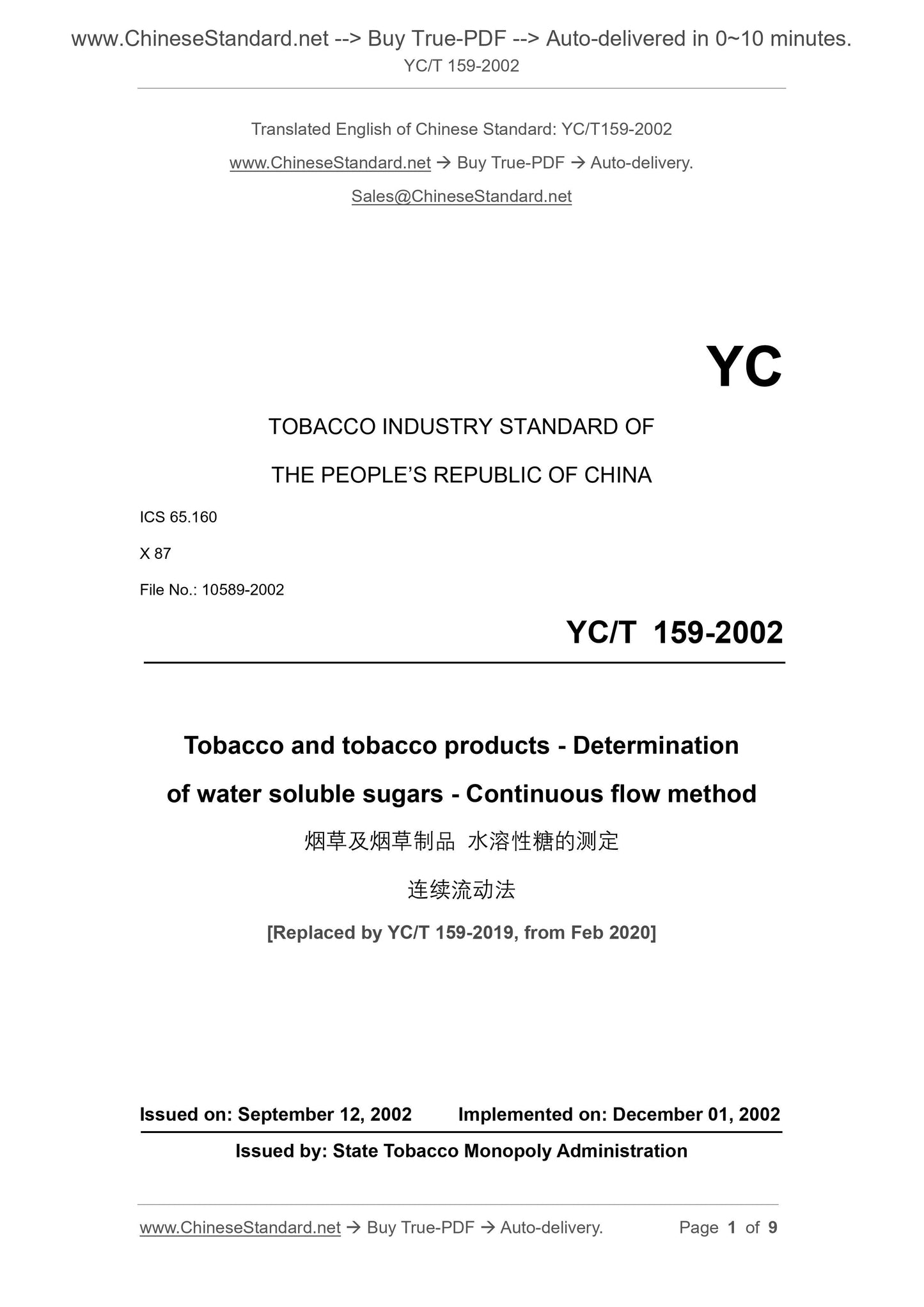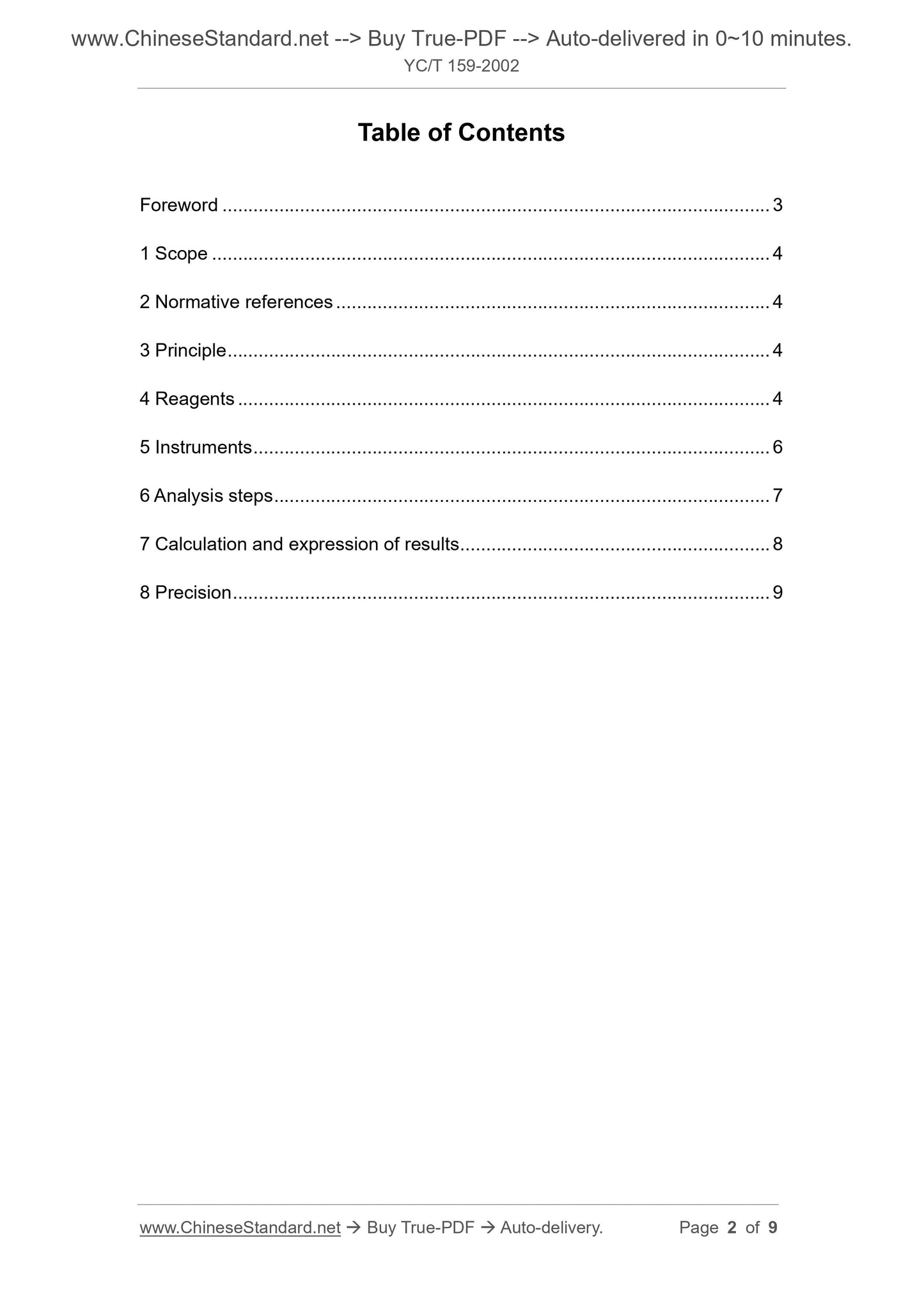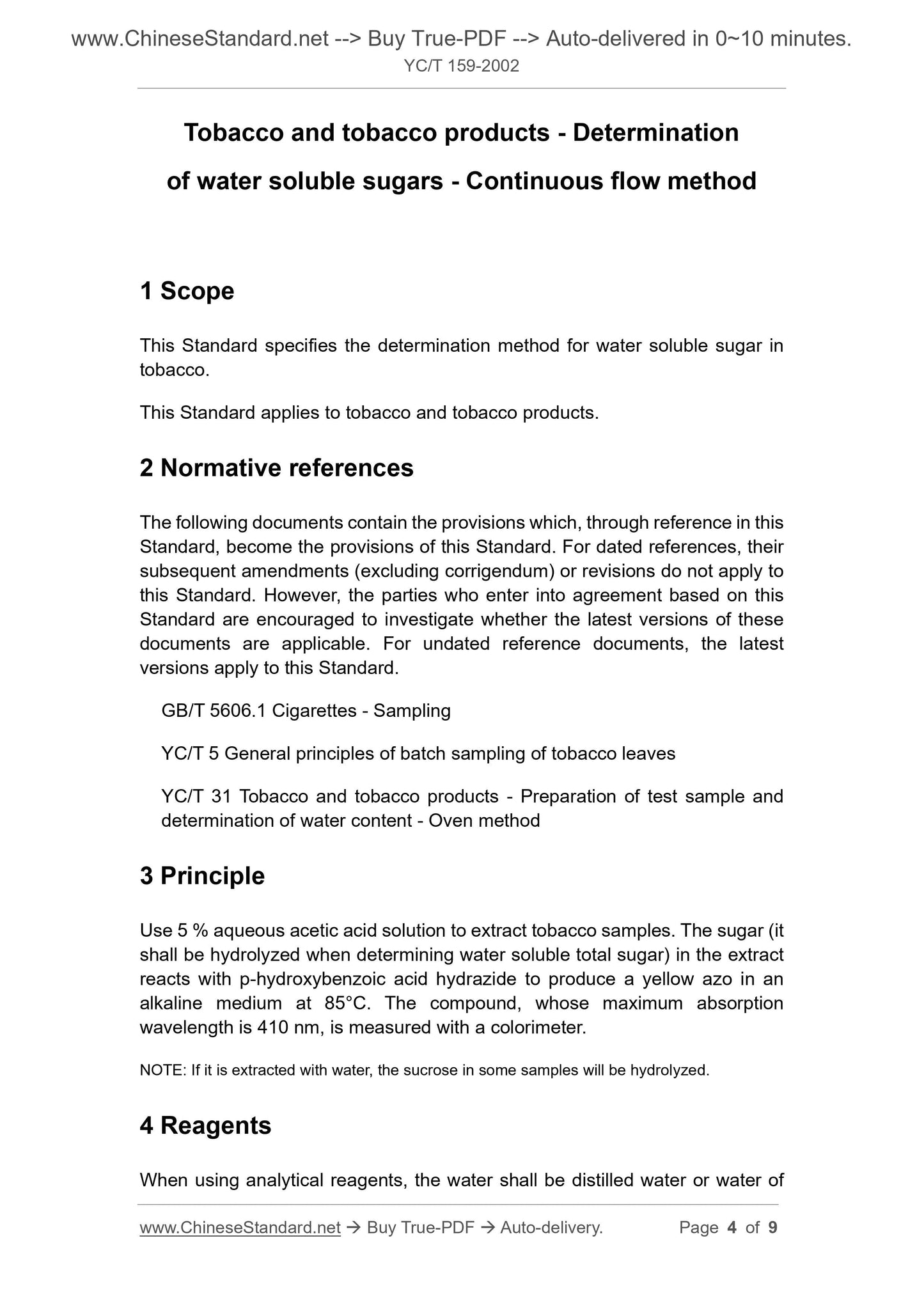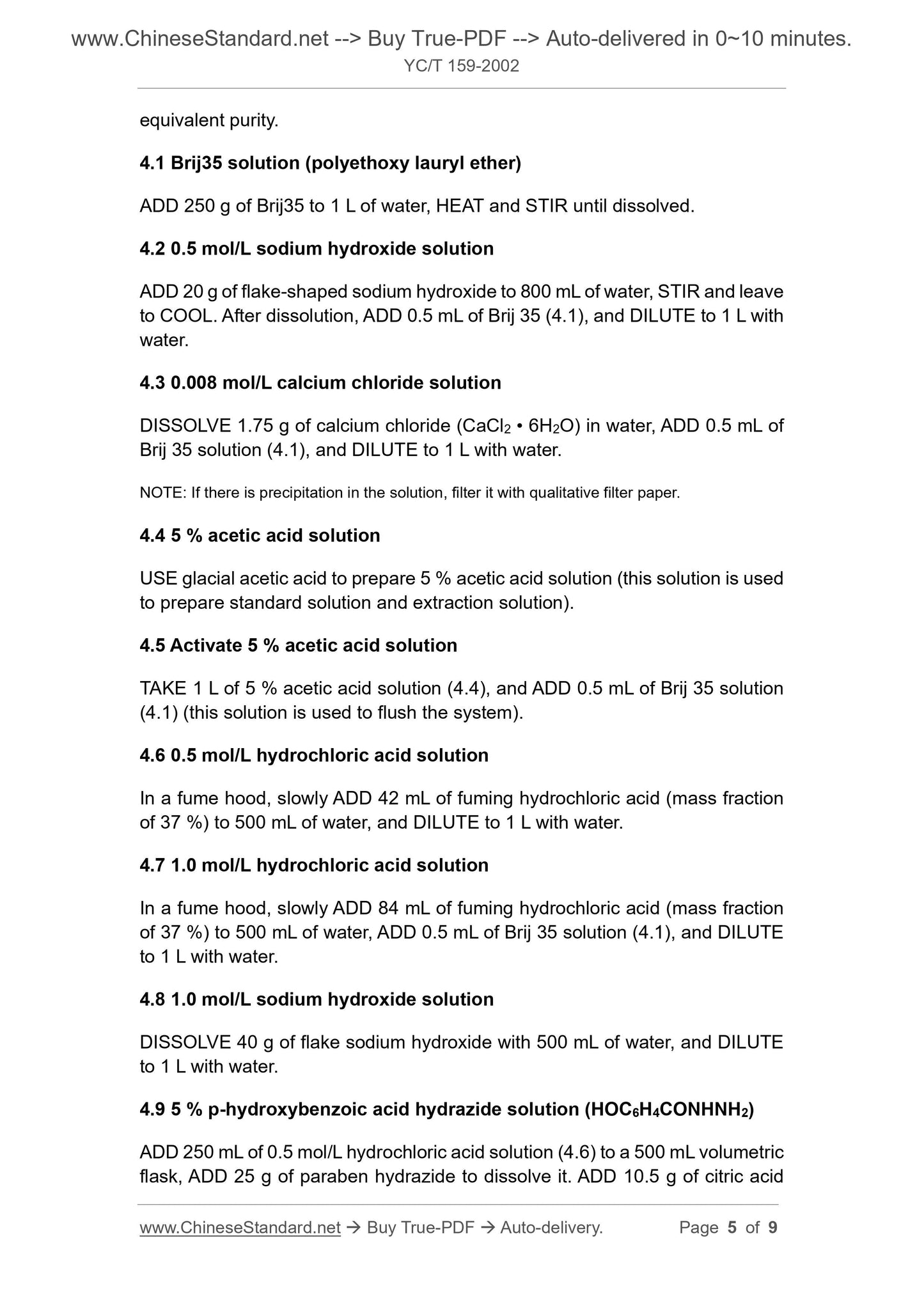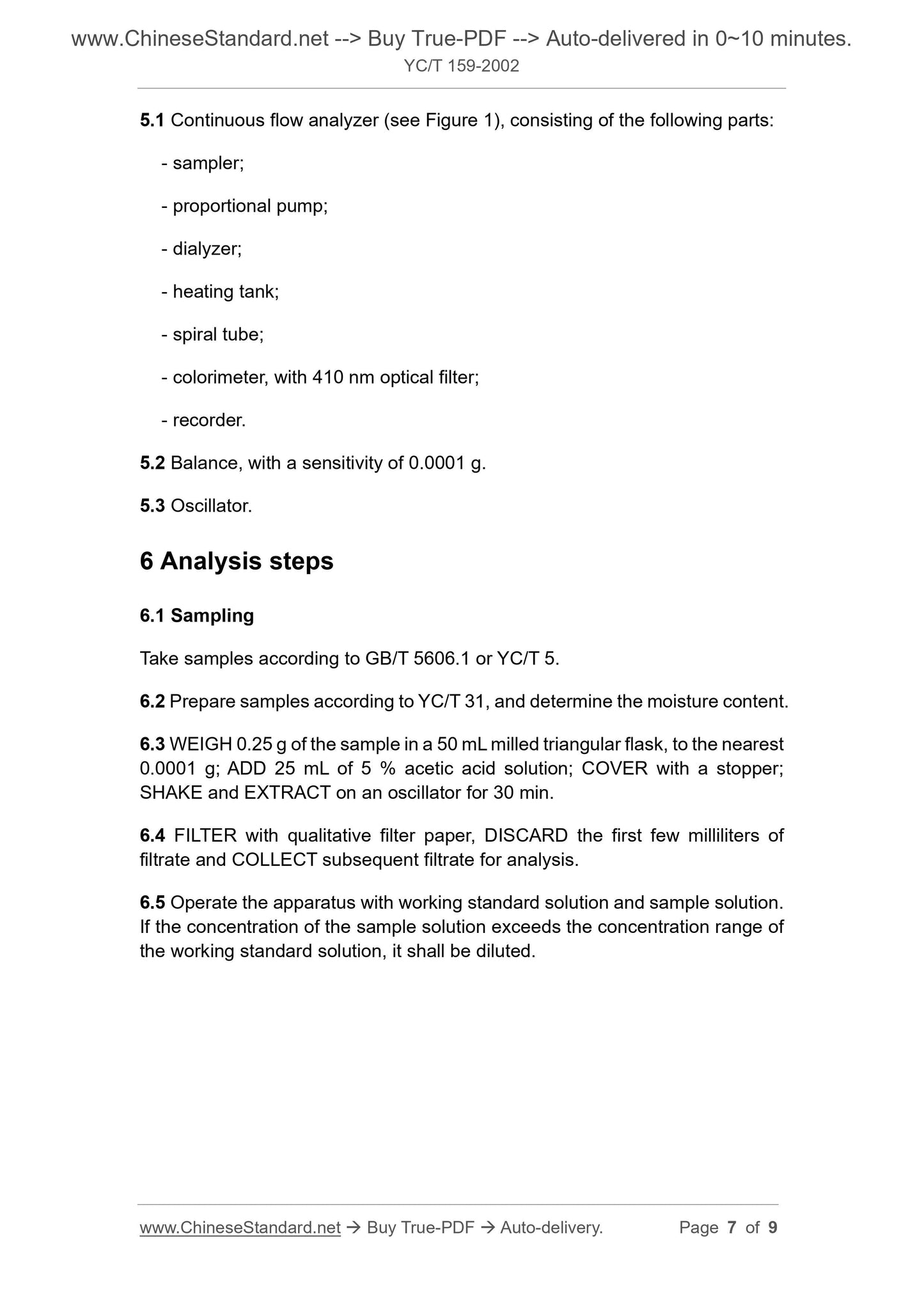1
/
of
5
PayPal, credit cards. Download editable-PDF & invoice in 1 second!
YC/T 159-2002 English PDF (YC/T159-2002)
YC/T 159-2002 English PDF (YC/T159-2002)
Regular price
$80.00
Regular price
Sale price
$80.00
Unit price
/
per
Shipping calculated at checkout.
Couldn't load pickup availability
YC/T 159-2002: Tobacco and tobacco products. Determination of water soluble sugars. Continuous flow method
Delivery: 9 seconds. Download (and Email) true-PDF + Invoice.Get Quotation: Click YC/T 159-2002 (Self-service in 1-minute)
Newer / historical versions: YC/T 159-2002
Preview True-PDF
Scope
This Standard specifies the determination method for water soluble sugar intobacco.
This Standard applies to tobacco and tobacco products.
Basic Data
| Standard ID | YC/T 159-2002 (YC/T159-2002) |
| Description (Translated English) | Tobacco and tobacco products. Determination of water soluble sugars. Continuous flow method |
| Sector / Industry | Tobacco Industry Standard (Recommended) |
| Classification of Chinese Standard | X87 |
| Classification of International Standard | 65.160 |
| Word Count Estimation | 6,696 |
| Date of Issue | 2002-09-12 |
| Date of Implementation | 2002-12-01 |
| Adopted Standard | CORESTA 38, MOD |
| Issuing agency(ies) | National Tobacco Monopoly Bureau |
| Summary | This standard specifies the tobacco Method for determination of water soluble sugars. This standard applies to tobacco and tobacco products. |
Share
